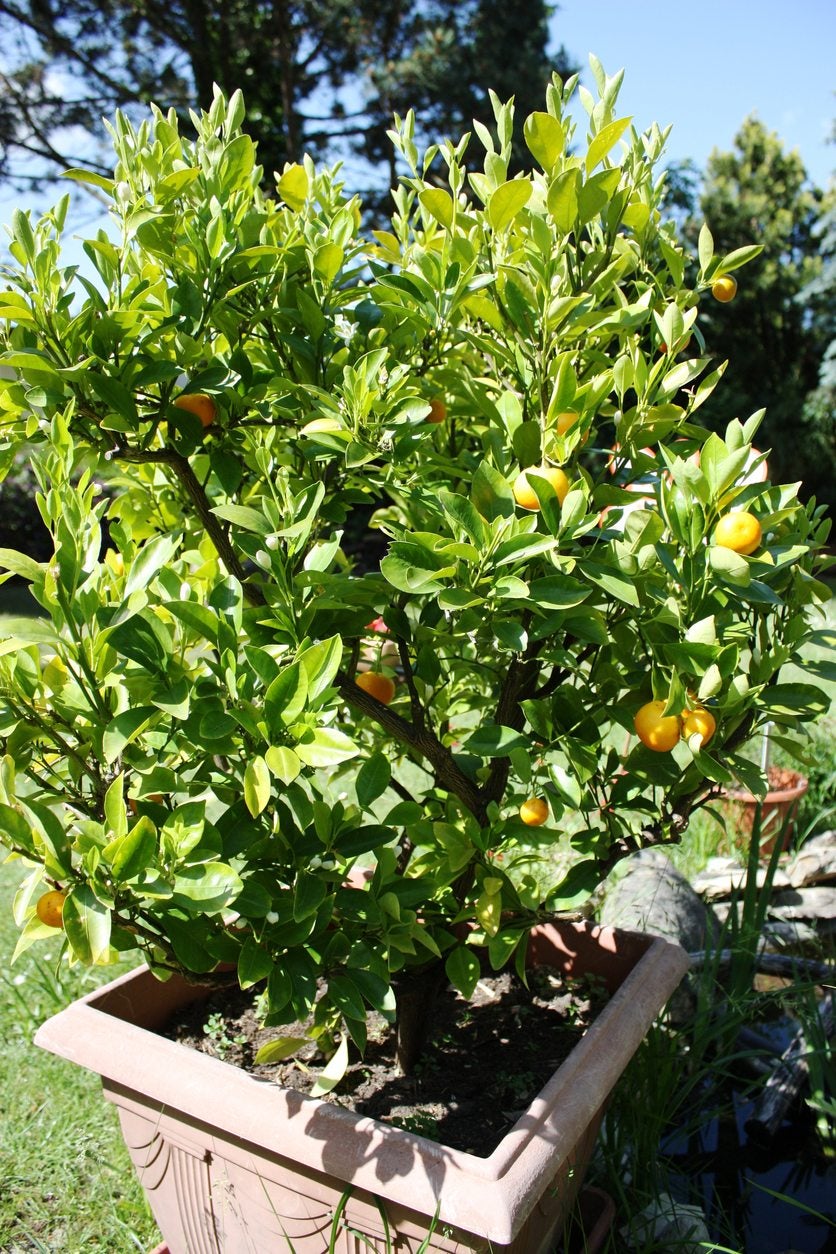Planting Kumquat Trees In Containers: Growing Kumquat Trees In Pots

Of the citrus, kumquats are fairly easy to grow, and with their smaller size and few to no thorns, they are perfect for kumquat container growing. Likewise, since kumquats are hardy to 18 F. (-8 C.), growing kumquat trees in pots makes it easy to move them out of frigid temperatures to protect them during cold snaps. Read on to find out how to grow kumquats in a pot.
Container Grown Kumquat Trees
Nagami is the most popular type of kumquat available and has deep-orange, oval fruit with 2-5 seeds per kumquat. The larger round Meiwa, or “the sweet kumquat,’ is less tart than Nagami with a sweeter pulp and juice, and is nearly seedless. Either variety will do well as a container grown kumquat. Kumquats have been grown in Europe and North America since the mid-19th century as ornamental trees and as potted specimens on patios and in greenhouses, so growing kumquat trees in containers is nothing new. When you grow kumquat trees in containers, choose as large a container as possible. Be sure the pot has good drainage since citrus hate wet feet (roots). To keep the soil from washing out of the large drainage holes, cover them with a fine screen. Also, raise container grown kumquat trees above the ground to allow for good air circulation. A good way to do this is to place your containers on a rolling dolly. That will raise the plant above ground level and also make it easy to move it around. If you don’t have or don’t want to purchase a rolling dolly, then plant feet or even some bricks at the corners of the pot will work. Just be sure not to block the drainage holes.
How to Grow Kumquat in a Pot
A couple things are true of plants grown in containers: they need to be watered more often and they are more cold sensitive than those in the ground. Putting kumquat trees grown in containers on a wheeled dolly will allow you to move the tree into a sheltered area more easily. Otherwise, when growing kumquat trees in pots, group containers together and cover with a blanket on cold nights. Kumquats should only be left outside in USDA zones 8-10. Kumquats are heavy feeders, so be sure to fertilize them regularly and water well before and after applying fertilizer to avoid burning the plant. Use a food formulated for citrus trees and one that has at least a 1/3 slow-release nitrogen. Slow release fertilizers have the advantage of offering continuous nutrition for about 6 months, which reduces the amount of labor on your part as well as the cost. You can also use a diluted liquid fertilizer, such as liquid kelp, fish emulsion or a combination of the two. And that’s about all there is to kumquat container growing. Fruit will be ripe from November through April and ready to eat out of hand or for use in the making of delicious marmalade.
Sign up for the Gardening Know How newsletter today and receive a free copy of our e-book "How to Grow Delicious Tomatoes".

Amy Grant has been gardening for 30 years and writing for 15. A professional chef and caterer, Amy's area of expertise is culinary gardening.
